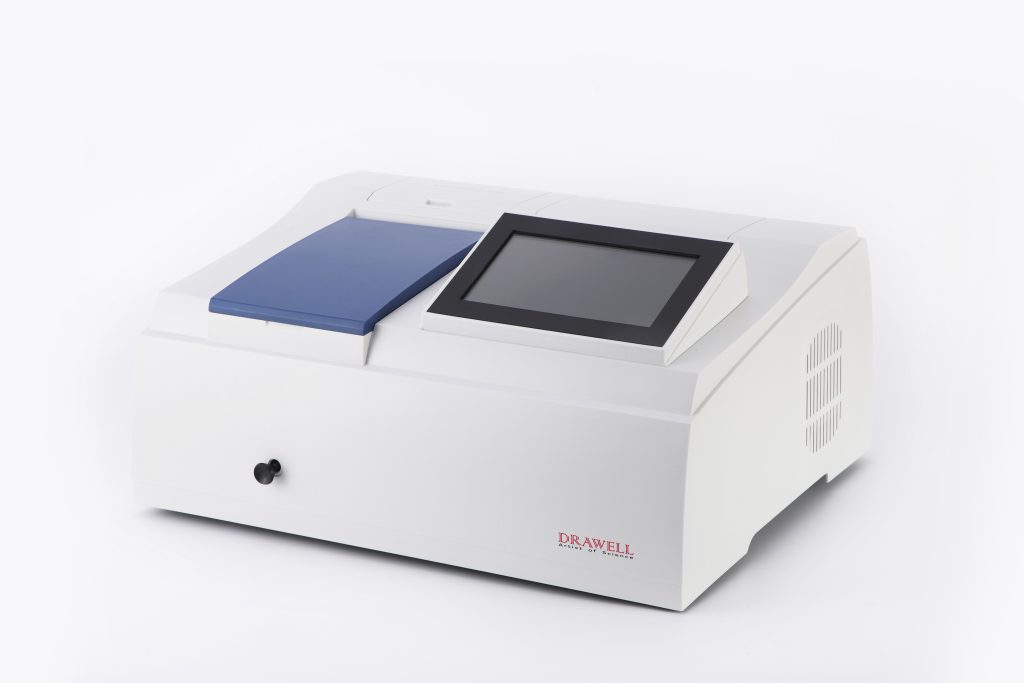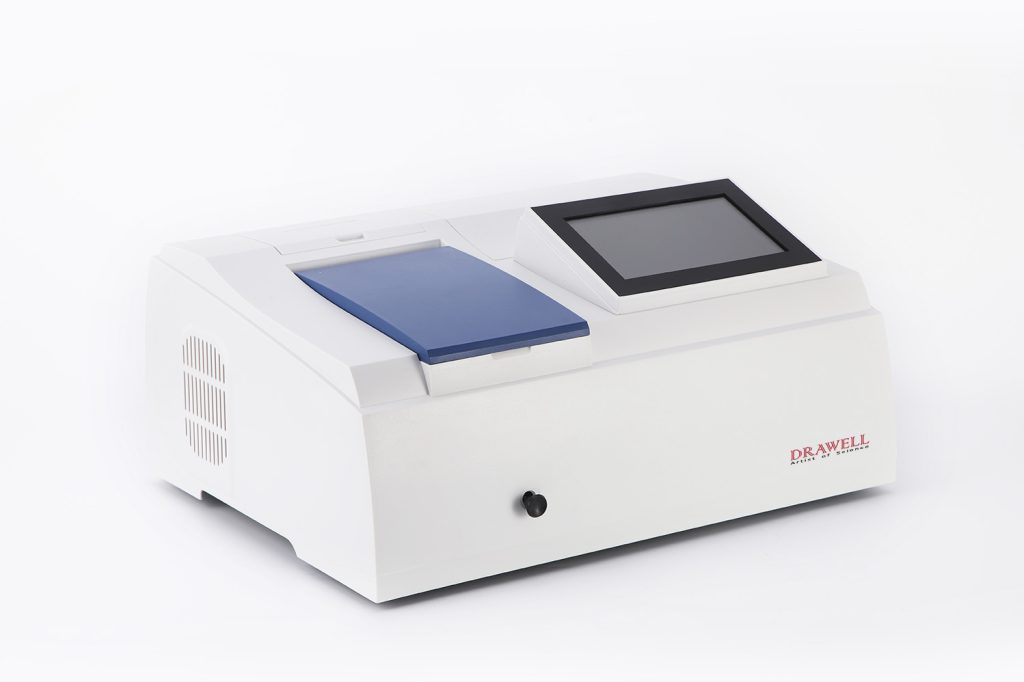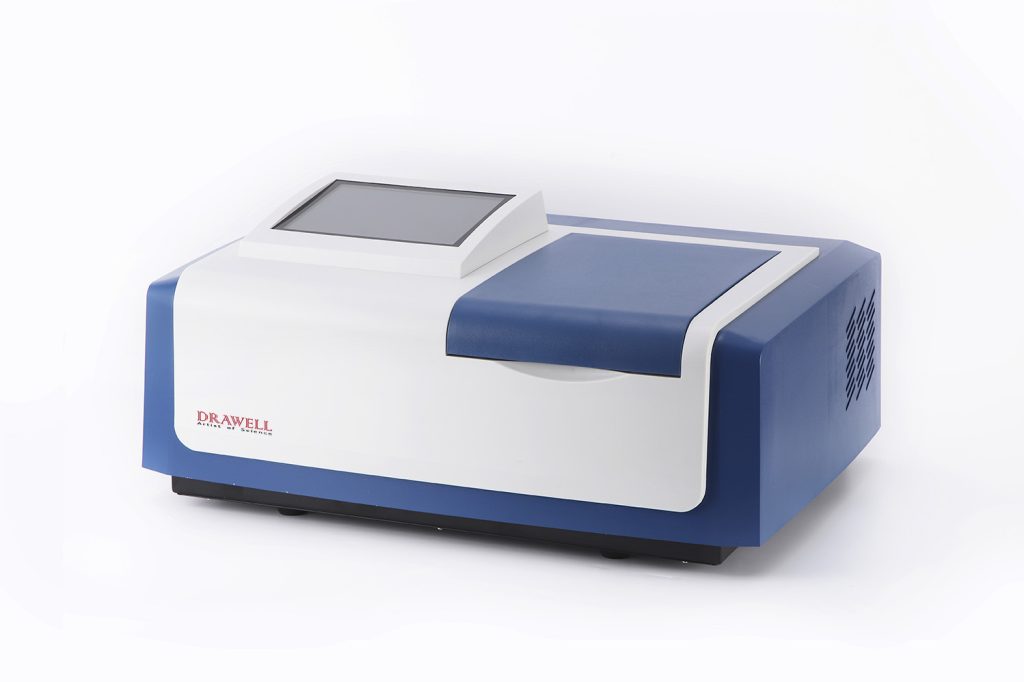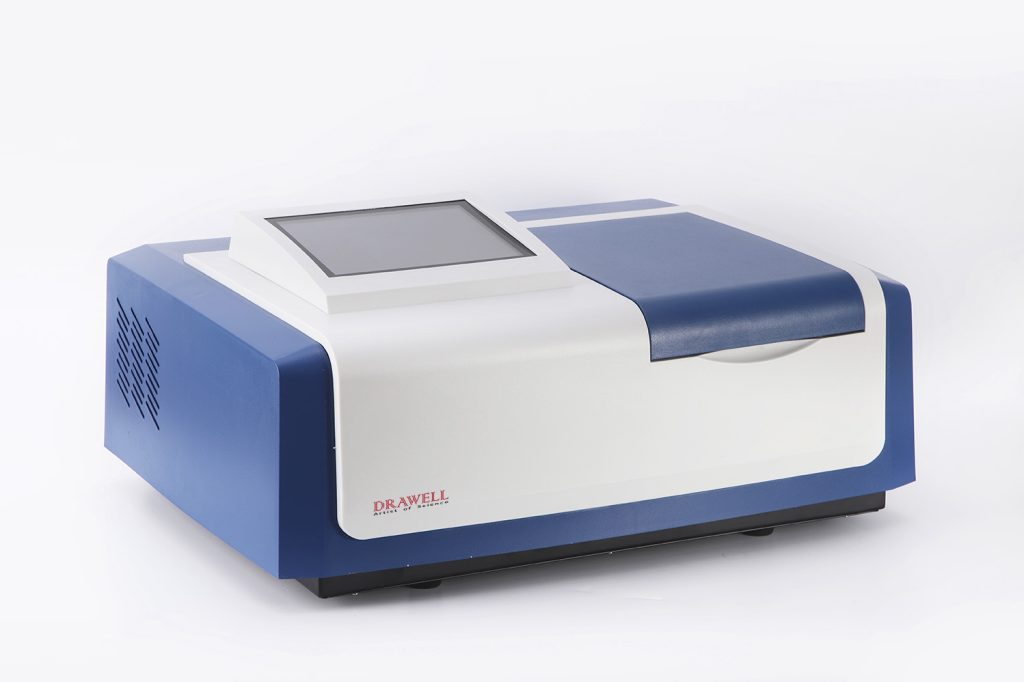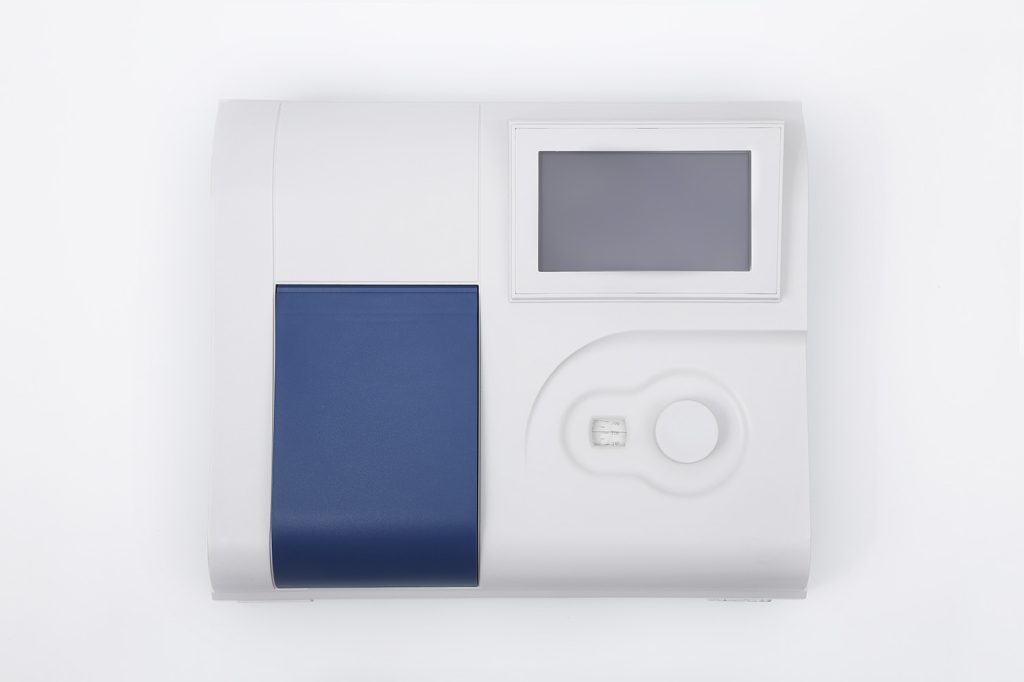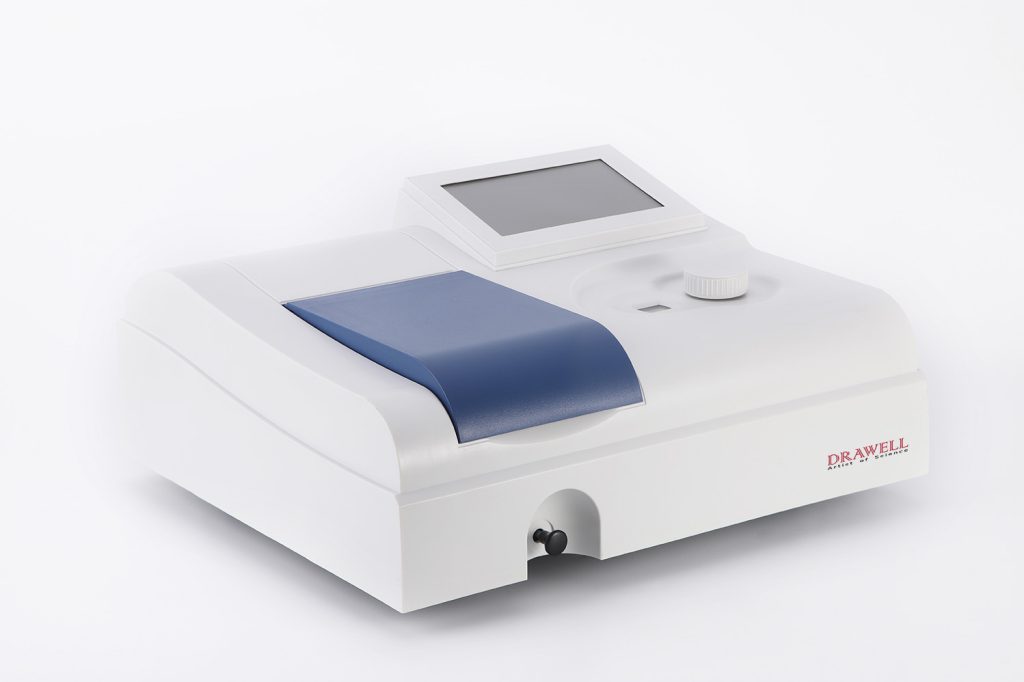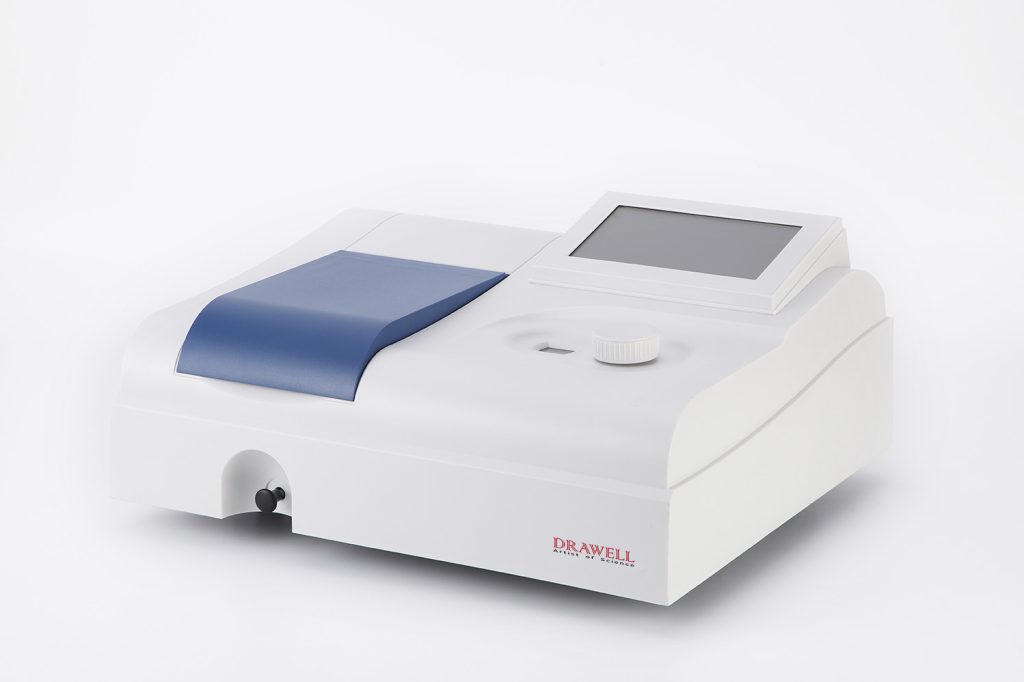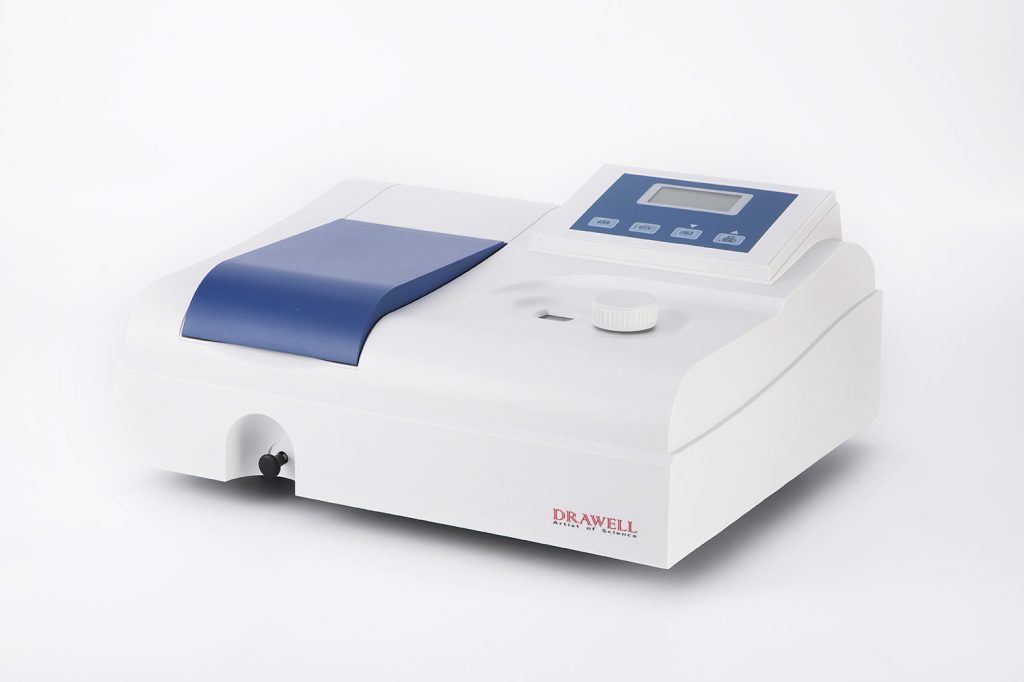UV-VIS spectrophotometers are extensively used in analytical chemistry to determine how much light a compound absorbs as a function of wavelength.
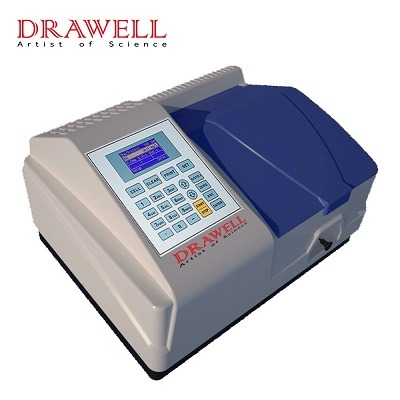
Types of UV-VIS Spectrophotometer
Single-Beam UV-VIS Spectrophotometer
A single-beam spectrophotometer features a single light beam divided into two parts: a reference beam and a sample beam. The reference beam is directed through a blank solution, whereas the sample beam is directed through the sample solution. By comparing the intensity of the sample beam to that of the reference beam, the amount of light absorbed by the sample is calculated.
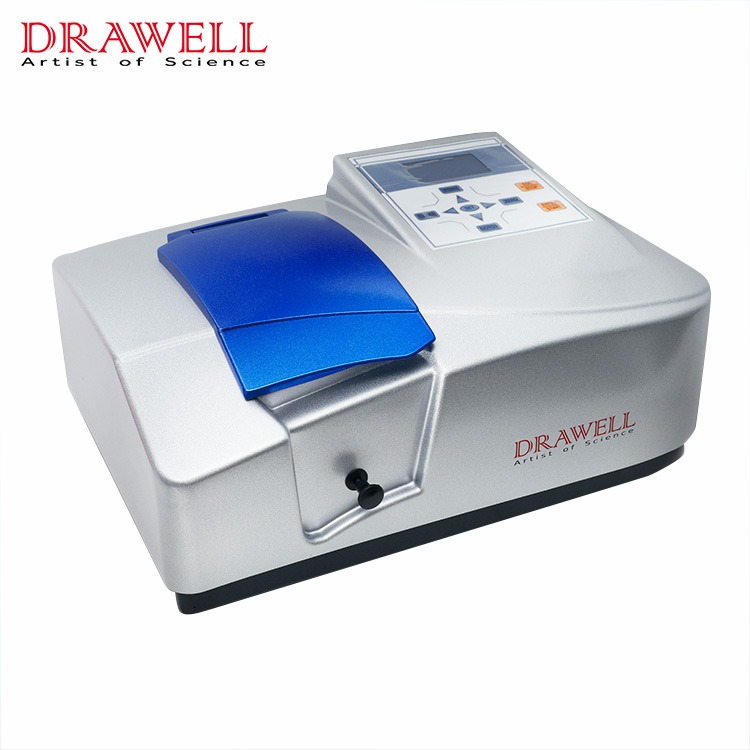
Double-Beam UV-VIS Spectrophotometer
A double-beam spectrophotometer features two independent light beams that pass through the sample and reference solutions at the same time. This enables more precise measurements since any changes in the light source or optical components affect both the sample and reference beams equally.
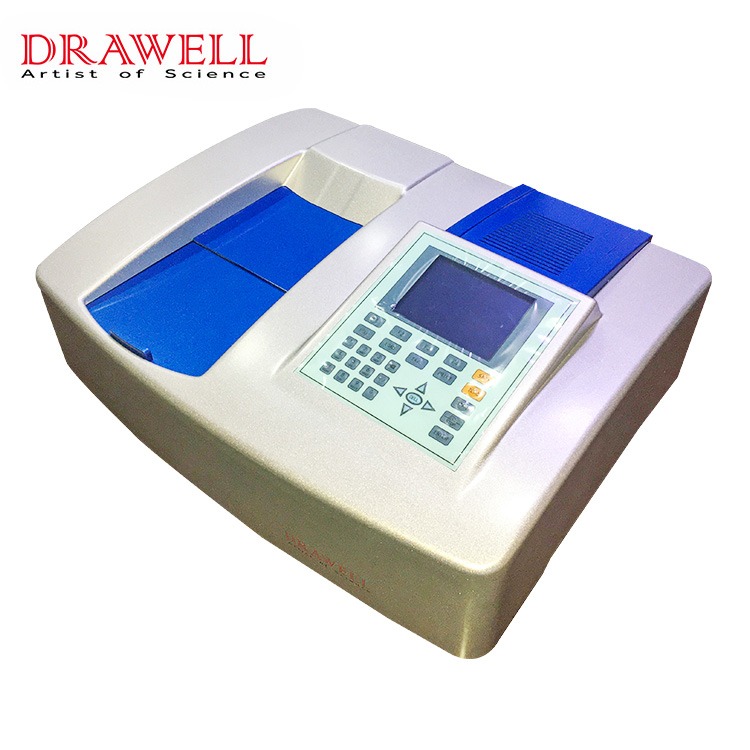
Split-Beam UV-VIS Spectrophotometer
This split beam UV-VIS spectrophotometer divides the light beam into two portions, one of which passes through the sample and the other through a reference solution. The two beams are then recombined, and the intensity difference between them is measured. Split-beam spectrophotometers are similar to double-beam spectrophotometers in that they are tiny and inexpensive.
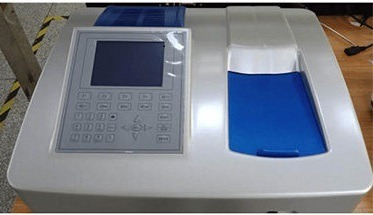
Portable UV-VIS Spectrophotometer
Portable ultraviolet-vis spectrophotometers are lightweight and portable, making them ideal for field work and on-site measurements. Portable spectrophotometers are often less capable than benchtop units, although they are handy for short, on-the-go analysis.
Microplate UV-VIS Spectrophotometer
Microplate spectrophotometers are intended for high-throughput examination of microplate samples. Microplate spectrophotometers often have various measurement modes, including endpoint, kinetic, and spectrum scanning, and may measure hundreds of samples per hour.
Scanning UV-VIS Spectrophotometer
A scanning spectrophotometer can scan over a wide range of wavelengths and is useful for analyzing a substance’s spectral properties. Scanning spectrophotometers can provide a sample spectrum, which can be beneficial for identifying unknown substances or analyzing complex combinations.
Operation of UV-VIS Spectrophotometer
To ensure accurate and trustworthy results, carefully follow the manufacturer’s instructions for instrument operation and maintenance, as well as complete required quality control checks on the measurements.
1. Calibration of UV-VIS Spectrophotometer
Calibration of a UV-VIS spectrophotometer is the initial step in utilizing it. The absorbance or transmittance of a reference material, such as a standard solution or blank, is measured at a specified wavelength or range of wavelengths. Calibration is done to check that the instrument is working properly and to provide a baseline for future readings.
2. Preparation of Samples
The samples can be prepared once the equipment has been calibrated. Depending on the nature of the analysis, samples might be prepared in a variety of formats, such as solutions, powders, or films. It is critical that the sample be homogeneous and free of impurities or contaminants that could interfere with the measurement.
3. Measurement of Absorbance or Transmittance
The sample is placed in the spectrophotometer’s sample container to be measured for absorbance or transmittance. The device then measures the amount of light absorbed or transmitted by the sample at a certain wavelength or range of wavelengths. The amount of light absorbed or transmitted is related to the sample concentration and the length of the light path through the sample.
4. Data Analysis and Interpretation
Following the completion of the measurement, the results can be analyzed and interpreted. This may include comparing the sample’s absorbance or transmittance to a calibration curve or reference material, computing the sample’s concentration, or determining the spectral properties of the sample.
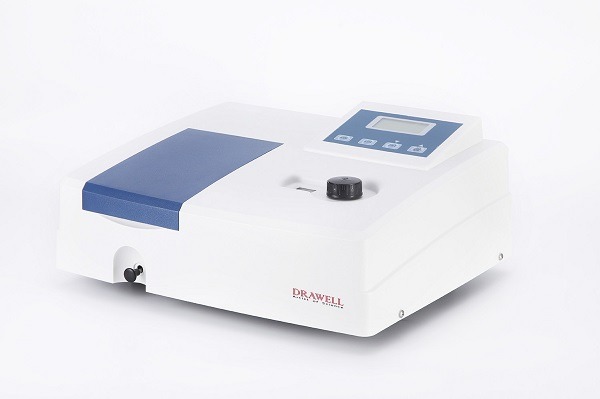
Factors Affecting UV-VIS Spectrophotometer Measurements
- Instrument Factors
The instrument’s quality and calibration can have a considerable impact on the accuracy and precision of UV-VIS spectrophotometer results. To achieve precise and dependable findings, the equipment must be calibrated and maintained on a regular basis. The age and condition of the light source, optical components, and detectors can also have an impact on measurement accuracy.
- Sample Factors
The sample’s composition and qualities can have an impact on the accuracy of UV-VIS spectrophotometer measurements. Factors such as sample concentration, light path length through the sample, and the presence of impurities or contaminants can all have an impact on absorbance or transmittance measurements.
- Solvent Effects
The solvent used to dissolve the sample can also have an impact on absorbance and transmittance measurements. Solvents with strong absorbance or fluorescence can interfere with measures or obfuscate the sample’s absorption spectra. It is critical to select a solvent that will not interfere with the measurements and to make solvent blank corrections.
- Temperature Effects
Temperature changes can affect absorbance or transmittance measurements by changing the characteristics of the sample or the solvent. To guarantee accurate and consistent results, the temperature of the sample and the equipment must be controlled during the measurement.
- Wavelength Range
The wavelength range of the spectrophotometer might affect measurement accuracy, especially for complex or multi-component samples. It is critical to select a suitable wavelength range for the sample and to perform proper spectral corrections and analysis.
- Stray Light
Stray light is light detected by the spectrophotometer that is not transmitted straight through the sample. Stray light can degrade measurement accuracy by adding noise or interference to the signal. To provide precise and dependable findings, it is critical to quantify and compensate for stray light.
Summary
UV-VIS spectrophotometers play an important role in many industries because they provide an accurate and reliable examination of the optical properties of a wide range of samples while also being versatile and flexible. It is critical to highlight that the accuracy and precision of measurements acquired using a UV-VIS spectrophotometer are critical.

